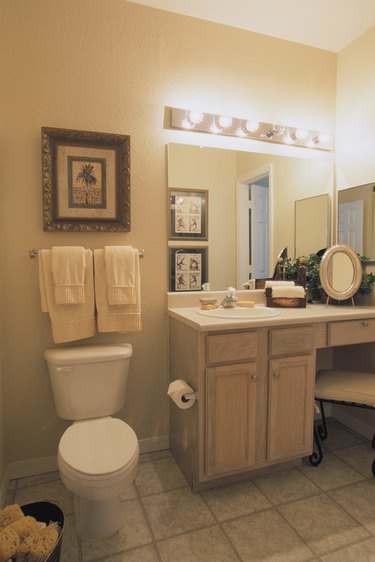Things You'll Need
Screwdriver
Pliers (single-handle faucets only)
Handle puller (dual-handle faucets only)
Wrench (dual-handle faucets only)
Utility knife (dual-handle faucets only)

Unlike some shower and kitchen faucets, which feature a third handle to control a diverter valve, bathroom faucet housings feature only one- or two-handle designs. Single-handle designs are equipped with cartridge faucets while dual-handle designs use compression faucets. Cartridge faucets are one-piece designs that cannot be disassembled, but replacement cartridges usually cost only a few dollars. By contrast, compression faucets can be disassembled and repaired.
Single-Handle Faucets
Step 1
Turn the water off at the two shut-off valves below the sink.
Video of the Day
Step 2
Remove the screw from the middle of the faucet handle with a screwdriver. Lift the handle off the faucet.
Step 3
Remove the metal clip from the top of the faucet by pulling the clip away with pliers.
Step 4
Pull the faucet out of the faucet housing.
Dual-Handle Faucets
Step 1
Turn the water off at the two shut-off valves below the sink.
Step 2
Remove the screw from the middle of each faucet handle with a screwdriver. Lift the handles off the faucets. Remove a corroded handle with a handle puller. Compress the two jaws at the bottom of the puller around the base of the handle. Turn the handle at the top of the puller in a clockwise direction to draw the handle off the faucet.
Step 3
Remove the large nut that surrounds the base of the exposed-portion of the faucet with a wrench. Life the faucet out of the faucet housing.
Step 4
Remove the screw from the bottom of the faucet with the screwdriver to free the rubber washer. The washer helps prevent the faucet from leaking.
Step 5
Cut the rubber O-ring off the lower half of the faucet with a utility knife. The O-ring works in conjunction with the rubber washer at the bottom of the faucet to prevent leaks.
Video of the Day